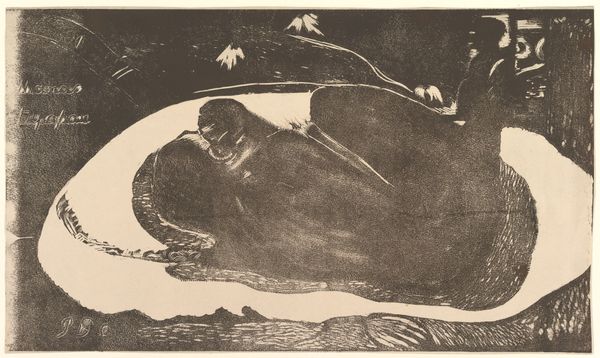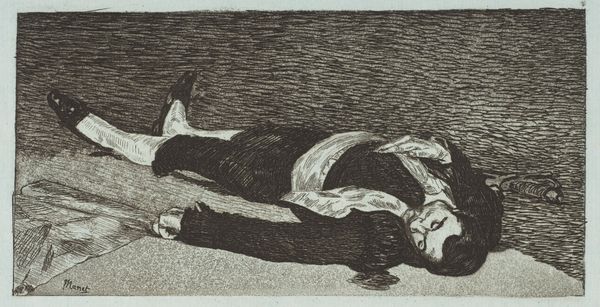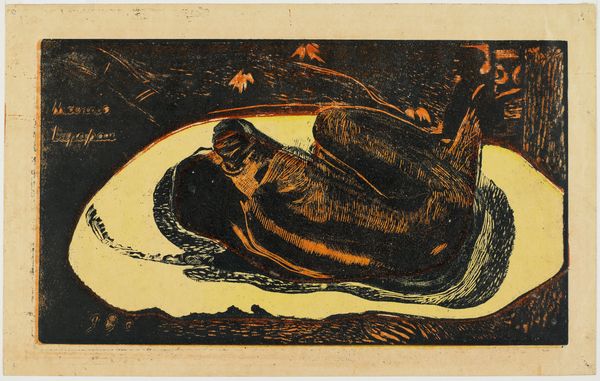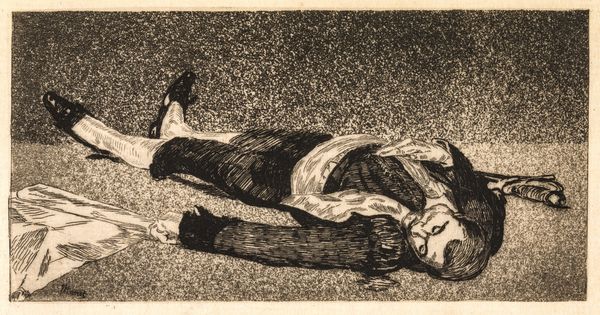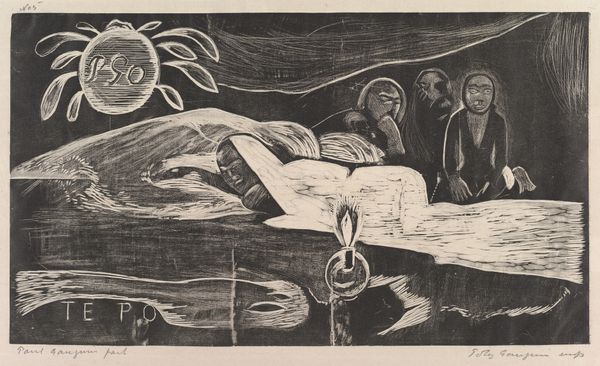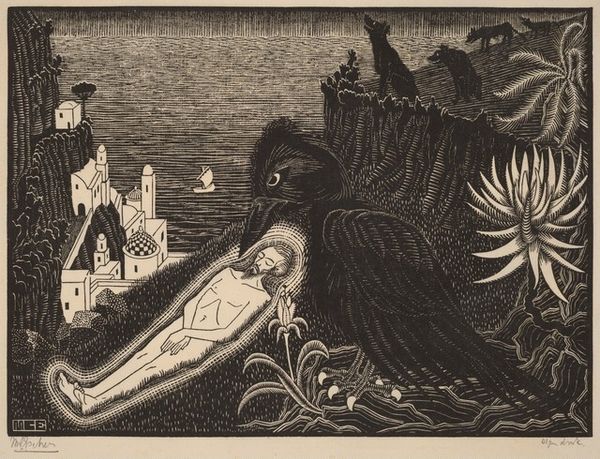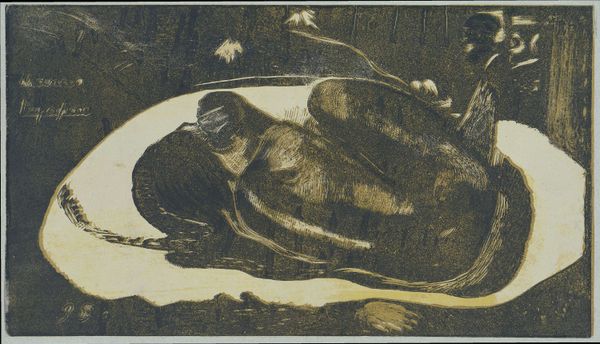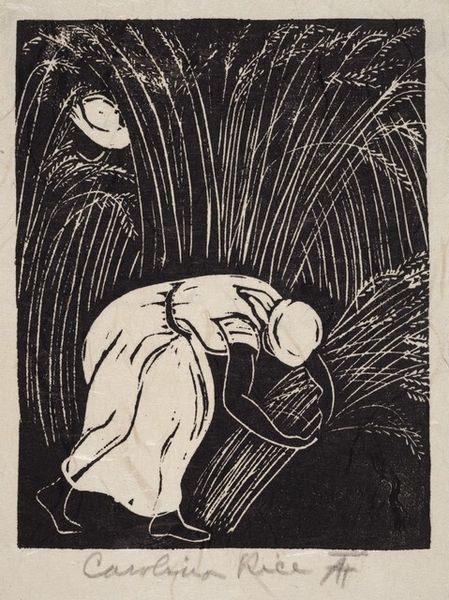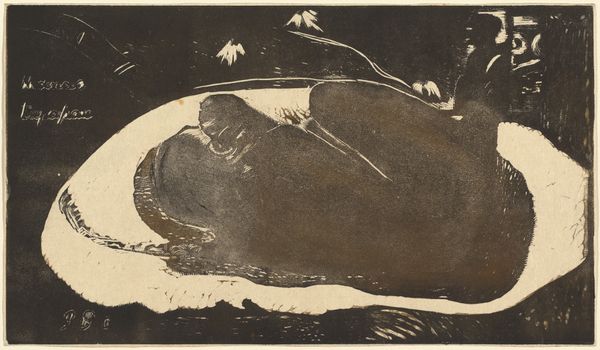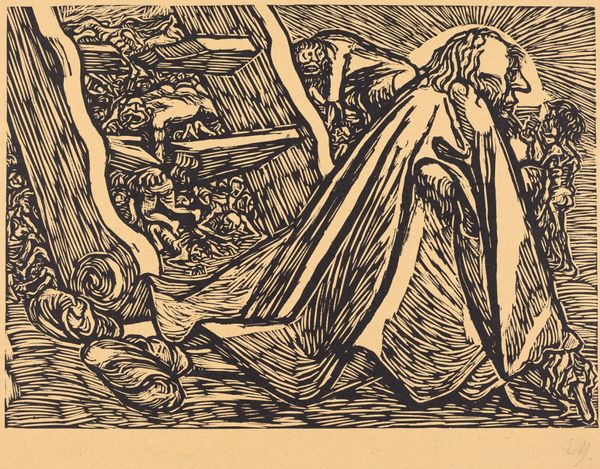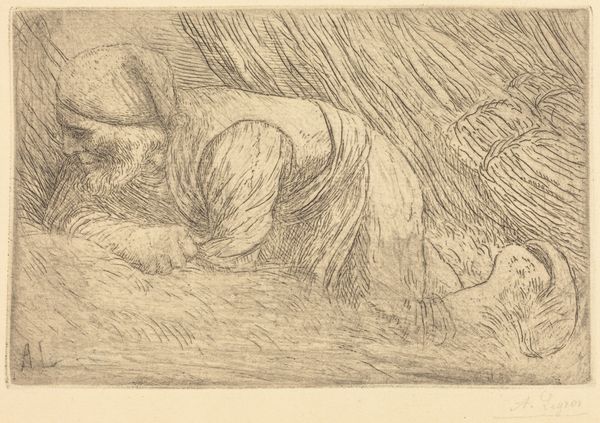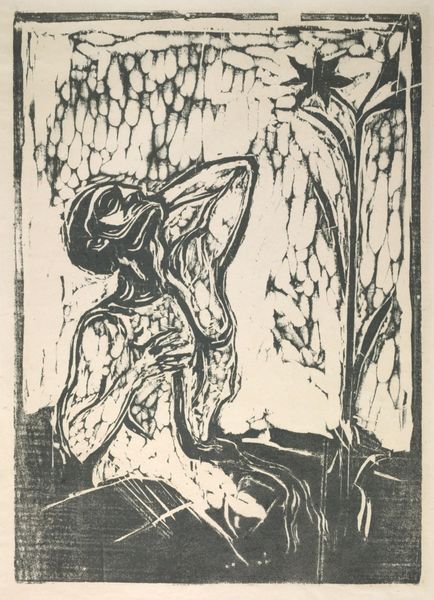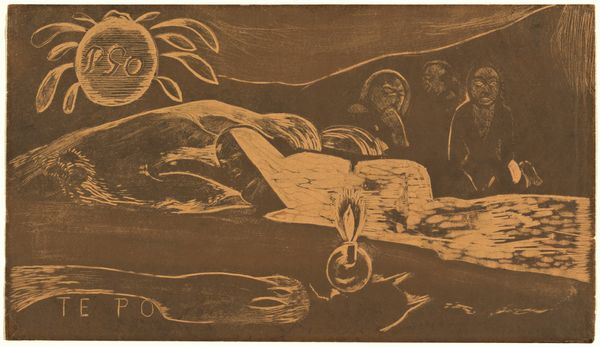
Spirit of the Dead Watching (Manao Tupapau), from Fragrance (Noa Noa) 1893 - 1894
0:00
0:00
drawing, fibre-art, print, woodcut
#
drawing
#
fibre-art
# print
#
landscape
#
woodcut
#
abstraction
#
symbolism
#
nude
Dimensions: block: 8 1/16 x 14 in. (20.5 x 35.6 cm) sheet: 10 5/8 x 16 7/8 in. (27 x 42.9 cm)
Copyright: Public Domain
Editor: Here we have Paul Gauguin's "Spirit of the Dead Watching," also known as "Manao Tupapau," created around 1893-1894. It’s a woodcut and printed as part of his "Noa Noa" suite. It strikes me as quite unsettling. What do you see in this piece, with its dense textures? Curator: The figure's pose speaks volumes, doesn’t it? She is both vulnerable in her nudity and yet defiant, staring back. Notice how Gauguin juxtaposes her with the "tupapau," the spirit of the dead, behind her. This symbol taps into primal fears and ancestral beliefs. Do you find the gaze of the spirit menacing, or something else? Editor: It’s more unsettling than menacing. The spirit's face is obscured and yet intense, contributing to this uncanny atmosphere. What about the Tahitian title, "Manao Tupapau"? How does that inform our reading of the image? Curator: That's crucial. Gauguin's Tahitian experiences profoundly impacted his artistic vocabulary. "Manao Tupapau" translates to "she thinks of the ghost" or "the ghost thinks of her." It explores the intersection of the living and the dead in Tahitian belief. Gauguin aimed to capture that cultural memory, and fear of the night spirit is quite ancient and universal. He plays with our own cultural understanding of nudity and spirituality too, forcing us to confront our preconceptions. Editor: So it’s about the emotional weight of cultural symbols. It feels so immediate and layered with psychological nuance, like the viewer is walking into someone's fear. Curator: Exactly. Through such bold strokes, and stark contrasts he touches upon something deeply human, the space where personal anxiety meets collective memory. Editor: It really does change the way I view his other Tahitian works; I'll be paying much closer attention to his use of figures, now!
Comments
No comments
Be the first to comment and join the conversation on the ultimate creative platform.
